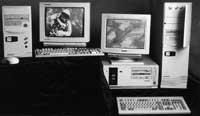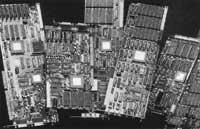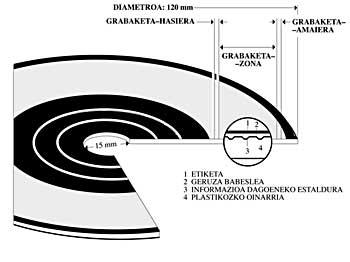Computer memory
1993/04/01 Romo Uriarte, Jesus Maria Iturria: Elhuyar aldizkaria
The computer is an electronic machine that uses symbols or symbols to process information following a program.
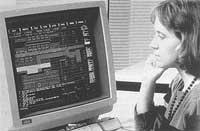
Due to the internal structuring of computers, the type of digital information that these machines can use, encoded by symbols 0 and 1. This does not mean that the user must indicate the information in this way. Although the computer works digitally, the operator will use language similar to that of the common languages when giving orders.
In order to fulfill the function of computers it is necessary to save the data and orders somewhere, and the same with intermediate and final results. This necessary storage space is called memory, it serves to accumulate data and as indicated below should not be mixed with floppy disks or disks.
The smallest information unit is called bit (two nary digi t) and can have two values, one bit can be zero or one. And because the drive is too small, the drive called byte is used more. The byte is the set of bits needed to represent a character. In most cases it consists of eight bits and is then called zortzikote, but they can also be seikotes. The most used are the following:
Multiple Symbol ValueKilo
Megas
Giga
2 20 = 1 1 048.576 10 6
2 30 = 1.073 1 741.824 10 9 kb
Mg
Gb
Memory components
The memory of a computer is composed of the memori table, address record, decoder and data record.
Memori table
It is used to store information and consists of elements that can be found in two situations. Each of these elements represents a bit. These bits are grouped into separate sets with each other and each of them is named memori. The length of the word memori can vary from one computer to another, being a byte, two or three. In the memory shown in Figure 1, the length of the word memori is 5 bits and should be taken as an example, since real computers have words of greater length.
These cells or sets of bits independent of the memori table are known as "gelascas" and have the ability to store information. Another very important feature is the address that will identify each stack.
To access information from memory you need to specify your address. Therefore, memory resembles a set of mailboxes where information, mailbox content and address are the location of the mailbox. As mentioned above, the information will be stored in the binary code and the addresses are also in the binary code, but conceptually they are completely different: the data that is placed over time in the tray of a address may be different, but the address of that stack is permanent and immutable.
Address registration
Indicates in which memory stack the next operation will occur in memory. The operations that a memory supports are reading (obtaining information from a memory stack) and writing (storing a data in a memory stack). The address record specifies the address of the stack to be used in the next operation.
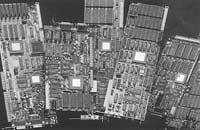
The length of the address record, i.e. the maximum number of bits you can accept, is related to the number of tenants in the memori table. As you can see in the image, if there are 8 addresses that can be obtained from 3 bits are enough to indicate the address of any stationary. The relationship between the length of the address record and the memori table is: if the address record has n bits the maximum number of cells that can be domiciled is 2 n.
Deco
The address in the address register is encoded and the corresponding stack must be activated. This activation or ignition is done electrically by interspersing this component called decoder. The work of the decoder is to take the address given in the binary code and activate the corresponding battery by means of an electric pulse.
Data Logging
It is the door of memory, here pass the data to be written and those to be read from it. The number of bits the data record has is equal to the length of memori, i.e. 5 in our example. This record is connected to the data bus. (See figure 1).
Memory operations
Two operations can be performed in a memory: reading and writing.
When making a reading the data or order is copied in one of the memory cells elsewhere on the computer, remaining when there is memory. The steps taken in reading are:
- Through the address bus connected to the address record, the information tray address reaches the address record.
- The direction of the inert that stores the information enters the decoder and it is activated electrically. The data in the active memori word will be read.
- The control unit is another component of the computer that indicates the need to read through the control bus.
- As it is a reading, a copy of the contents of the active box is transferred to the data record and as this record is connected to the data bus, it will be available for any other place on the computer.
A data that comes from outside in a memory stack will be stored in the editor. The steps that should be taken to carry out a writing are as follows:
- The address of the stack that will store the information through the address bus connected to the address record comes to the address record.
- The direction of this battery is entered into the decoder and activated electrically. The memo in which the writing is active will be made in that same word.
- The information that you want to store in memory comes to the data log through the data bus. The data bus has a double address: this bus is in charge of transporting the data that comes from outside to memory and those that go outside it.
- The control unit indicates the need for writing by the control bus.
- As it is a writing, what is in the data record is transferred to the battery that is active. In the wording the content that comes from the data record is replaced so that the old content is lost.
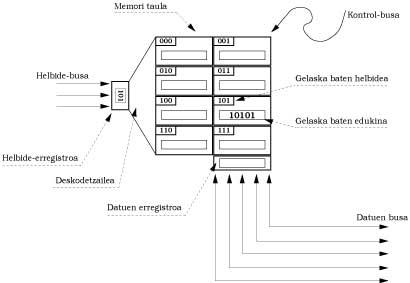
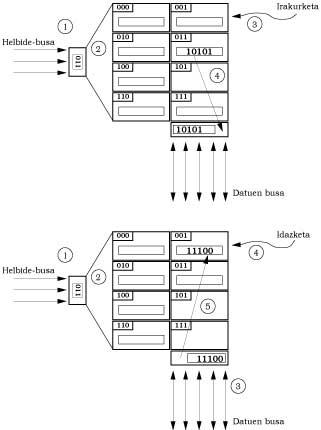

Gai honi buruzko eduki gehiago
Elhuyarrek garatutako teknologia




